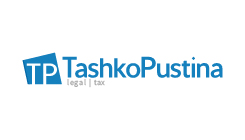The economy of Montenegro was severely impacted by the breakup of Yugoslavia into its constituent parts. In order to jump start its economy, calculated and efficient measures had to be undertaken. One of these measures was selecting a stable foreign currency as its own: first the Deutschmark (which was used in parallel with the Yugoslav dinar from 1999 to 2000), then, later, the Euro. This paved the path for economic growth and the creation of an open market, more welcoming to investors.
No Dull Year in Banking
The decade that just ended brought significant changes to the banking landscape in Romania. The banks were pushed to restructure their loan portfolios, consumer litigations increased exponentially, the cost of business increased, and Fintech companies started (although timidly) to take a slice of the pie. Populist legislation was enacted to protect consumers years after banking services were contracted. And a wave of acquisitions forced by the increased costs led to changing rankings at the top of the banking sector.
Investment Funds Industry in Croatia
Investment funds represent a rather small part of the financial market in Croatia, but they are undeniably growing in presence and importance. Investment funds are recognized as a significant economic driver for business growth, joining the already well-established banks, insurance companies, and pension funds.
Recent Developments on the Ukrainian Finance Market
Ukraine is undergoing a period of structural reform throughout its financial and banking sectors that is unprecedented in its scale and complexity. The reform of the currency control regime culminated in the full cancellation of a 26-year old system and the introduction of a legislative road map for the gradual implementation of the free movement of capital. The reform gave a critical impetus to the development of the securities market and foreign investments, with Clearstream opening a direct securities account at the National Bank of Ukraine (the NBU) to provide easier access to hryvnia-denominated sovereign bonds. Ukrainian banks were authorized to grant short-term loans in local currency to foreign investors so they could invest in the bonds and hedge the FX risks of such transactions. The introduction of the IBAN standard is another example of the ongoing process of harmonizing the Ukrainian payment landscape.
New Estonian Covered Bond Regime
Earlier this year the Estonian parliament enacted long-awaited dedicated covered bond legislation, finally allowing local banks to enter both regional and European-wide covered bond markets and to gain access to a reasonably priced and stable source of long-term funding for their key banking businesses (most importantly for funding the issuance of mortgage loans). Additionally, under the new legislation, local covered bond issuers able to meet prudential requirements under the Capital Requirements Regulation (CRR) will be able to benefit from certain forms of preferential treatment afforded to covered bonds. For the local banking sector that, at the moment, remains dominated by Scandinavian banking groups, the new legislation also creates a viable alternative to the parent funding.
Lithuania Lighted Up on the Map of FinTech World: What’s Next?
Amazingly, the Lithuanian FinTech ecosystem report of 2018 revealed that there were 170 FinTech companies based in Lithuania – reflecting 45 percent growth over the previous year – with some 2,600 employees working in FinTech companies, more than 700 of which were newly-employed in 2018. The numbers are still growing this year.
Austrian Supreme Court Rules on Cash Pooling: Take It with a Grain of Salt!
Cash pooling is a staple of corporate treasurers as an efficient way to allocate liquidity and reduce financing costs within a group of companies. Despite its commercial importance, neither Austrian statutory law nor the Austrian Supreme Court has provided any guidance as to whether cash pooling is permissible under Austrian law – in particular whether it is compatible with Austria’s strict capital maintenance laws.
































